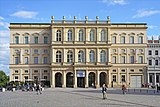
Impressionism was a 19th-century art movement characterized by relatively small, thin, yet visible brush strokes, open composition, emphasis on accurate depiction of light in its changing qualities, ordinary subject matter, unusual visual angles, and inclusion of movement as a crucial element of human perception and experience. Impressionism originated with a group of Paris-based artists whose independent exhibitions brought them to prominence during the 1870s and 1880s.
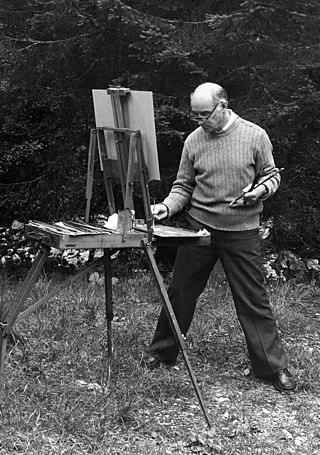
Abstract Impressionism is an art movement that originated in New York City, in the 1940s. It involves the painting of a subject such as real-life scenes, objects, or people (portraits) in an Impressionist-style, but with an emphasis on varying measures of abstraction. The paintings are often painted en plein air, an artistic style involving painting outside with the landscape directly in front of the artist. The movement works delicately between the lines of pure abstraction and the allowance of an impression of reality in the painting.

Modern art includes artistic work produced during the period extending roughly from the 1860s to the 1970s, and denotes the styles and philosophies of the art produced during that era. The term is usually associated with art in which the traditions of the past have been thrown aside in a spirit of experimentation. Modern artists experimented with new ways of seeing and with fresh ideas about the nature of materials and functions of art. A tendency away from the narrative, which was characteristic of the traditional arts, toward abstraction is characteristic of much modern art. More recent artistic production is often called contemporary art or postmodern art.

Post-Impressionism was a predominantly French art movement that developed roughly between 1886 and 1905, from the last Impressionist exhibition to the birth of Fauvism. Post-Impressionism emerged as a reaction against Impressionists' concern for the naturalistic depiction of light and colour. Its broad emphasis on abstract qualities or symbolic content means Post-Impressionism encompasses Les Nabis, Neo-Impressionism, Symbolism, Cloisonnism, the Pont-Aven School, and Synthetism, along with some later Impressionists' work. The movement's principal artists were Paul Cézanne, Paul Gauguin, Vincent van Gogh and Georges Seurat.
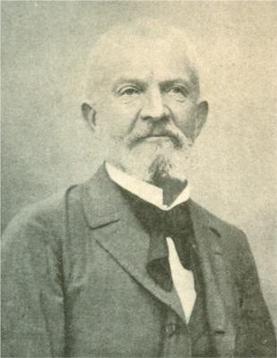
Armand Guillaumin was a French impressionist painter and lithographer.
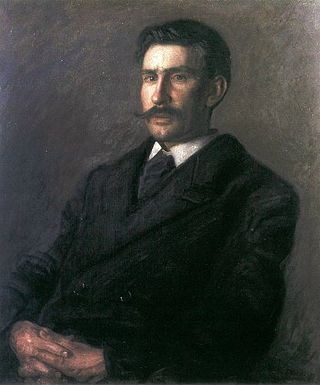
Edward Willis Redfield was an American Impressionist landscape painter and member of the art colony at New Hope, Pennsylvania. He is best known today for his impressionist scenes of the New Hope area, often depicting the snow-covered countryside. He also spent his summers on Boothbay Harbor, Maine, where he interpreted the local coastline. He frequently painted Maine's Monhegan Island.
The fame of Vincent van Gogh began to spread in France and Belgium during the last year of his life, and in the years after his death in the Netherlands and Germany. His friendship with his younger brother Theo was documented in numerous letters they exchanged from August 1872 onwards. The letters were published in three volumes in 1914 by Johanna van Gogh-Bonger, Theo's widow, who also generously supported most of the early Van Gogh exhibitions with loans from the artist's estate. Publication of the letters helped spread the compelling mystique of Vincent van Gogh, the intense and dedicated painter who died young, throughout Europe and the rest of the world.

John Peter Russell was an Australian impressionist painter.

Hugo von Tschudi (1851–1911) was an art historian and museum curator. He was director of the Nationalgalerie in Berlin (1896–1909) where he acquired many important Impressionist works. Tschudi was born in Austria and became a naturalised Swiss citizen.

The Red Studio is an oil on canvas painting by French artist Henri Matisse from 1911. It is held in the collection of the Museum of Modern Art, in New York.
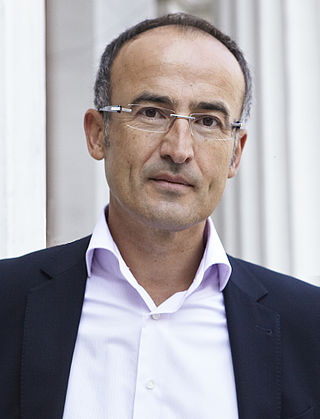
Tobias G. Natter is an Austrian art historian and internationally renowned art expert with a particular expertise in "Vienna 1900".

Fauvism is a style of painting and an art movement that emerged in France at the beginning of the 20th century. It was the style of les Fauves, a group of modern artists whose works emphasized painterly qualities and strong colour over the representational or realistic values retained by Impressionism. While Fauvism as a style began around 1904 and continued beyond 1910, the movement as such lasted only a few years, 1905–1908, and had three exhibitions. The leaders of the movement were André Derain and Henri Matisse.
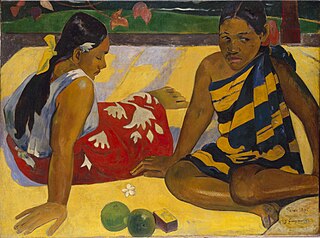
The Galerie Neue Meister in Dresden, Germany, displays around 300 paintings from the 19th century until today, including works from Otto Dix, Edgar Degas, Vincent van Gogh and Claude Monet. The gallery also exhibits a number of sculptures from the Dresden Sculpture Collection from the same period. The museum's collection grew out of the Old Masters Gallery, for which contemporary works were increasingly purchased after 1843.

A Woman Walking in a Garden is an oil-on-canvas painting by Dutch Post-Impressionist painter, Vincent van Gogh. This painting was created in 1887 during the two years van Gogh lived in the northern suburbs of Paris. There is a woman walking through a lush and green garden dotted with flowers and in the background there is a building concealed behind a thick row of trees. A red paint border along the edge of the canvas frames the scene.This painting is a part of the Riverbank in Clichy Triptych along with Fishing in Spring housed at the Art Institute of Chicago and River Bank in Springtime housed at the Dallas Museum of Art. All three pieces have red borders as to indicate their association to each other in a triptych.

The Montmartre paintings are a group of works that Vincent van Gogh created in 1886 and 1887 of the Paris district of Montmartre while living there, at 54 Rue Lepic, with his brother Theo. Rather than capture urban settings in Paris, van Gogh preferred pastoral scenes, such as Montmartre and Asnières in the northwest suburbs. Of the two years in Paris, the work from 1886 often has the dark, somber tones of his early works from the Netherlands and Brussels. By the spring of 1887, van Gogh embraced use of color and light and created his own brushstroke techniques based upon Impressionism and Pointillism. The works in the series provide examples of his work during that period of time and the progression he made as an artist.

Seine (paintings) is the subject and location of paintings that Vincent van Gogh made in 1887. The Seine has been an integral part of Parisian life for centuries for commerce, travel and entertainment. Here van Gogh primarily captures the respite and relief from city life found in nature.
Victor Alfred Paul Vignon was a French Impressionist landscape painter and graphic artist. He was involved with the impressionism movement and its protagonists, as he exhibited at the fifth, sixth, seventh, and eight Paris Impressionist Exhibitions from 1880 to 1886.

Imperial Fritillaries in a Copper Vase is an oil painting on canvas created by the post-impressionist painter Vincent van Gogh in Paris, 1887. The painting is now part of the collection of the Musée d'Orsay in Paris, France. This work was made at a time of the life of Van Gogh when he first encountered influences from Impressionists and became aware of light and color, implementing it in his paintings. This painting presages some of his most famous subsequent works, and stands out from other still lifes because of the implementation of mixed techniques and complementary colors.

The Daros Collection is a Swiss private collection of modern art owned by the Stephan Schmidheiny family. At its core are comprehensive groups of work by Andy Warhol, Brice Marden, Cy Twombly, Willem de Kooning and Gerhard Richter.
The Ten, also known as The Ten Whitney Dissenters, were a group of New York–based artists active from 1935 to 1940. Expressionist in tendency, the group was founded to gain exposure for its members during the economic difficulty of the Great Depression, and also in response to the popularity of Regionalism which dominated the gallery space its members sought.


